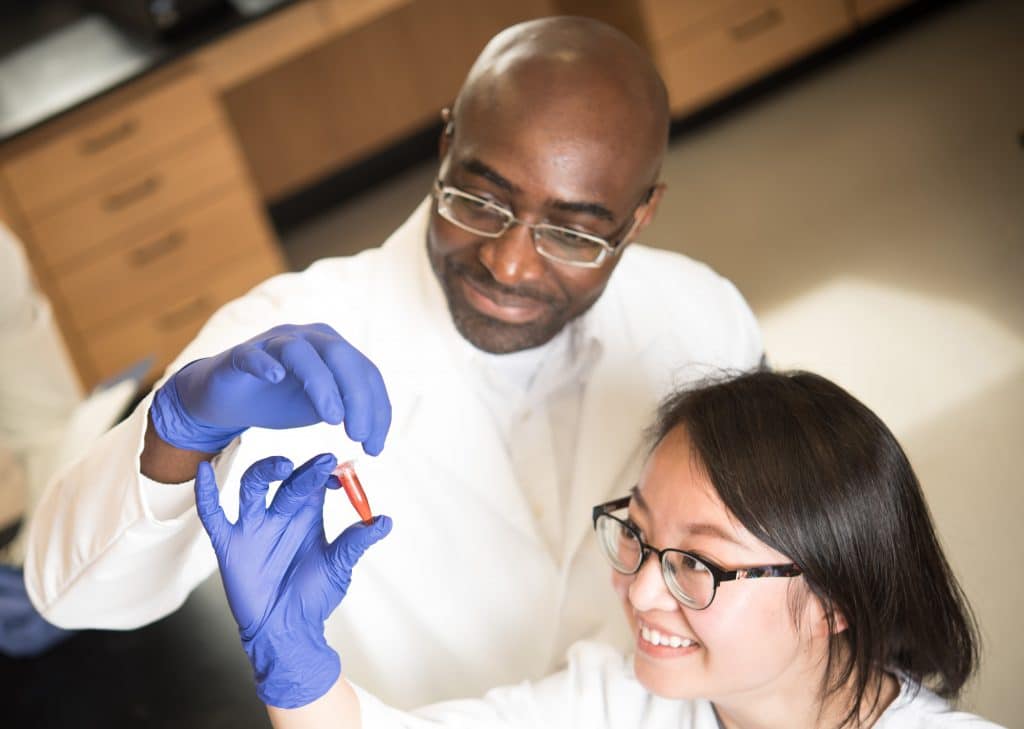We all know repeated exposure to loud noises can damage or kill auditory cells, causing permanent hearing loss.
But what if that isn’t as true as we thought? Research out of NAU’s Cell and Molecular Pathology Lab shows there may be a way to prevent and treat noise-induced hearing loss, thanks to a special mechanism in mouse DNA. It could have ramifications for other organs as well.
Lab director O’neil Guthrie, professor in the Department of Communication Sciences and Disorders, has found that the DNA of a certain type of mouse has repair signals that stop the cell death that leads to hearing loss. His lab is now building on this research with a grant of more than $650,000 from the U.S. Department of Defense with the goal of finding ways to prevent and treat noise-induced hearing loss.
“The U.S. Department of Defense is interested in this work because it has the potential to provide, for the first time, a biomedical approach to prevent or treat noise-induced hearing loss with applications for a wide variety of other conditions such as wound repair and neuroprotection,” Guthrie said. “This grant will allow us to further interrogate and expand on our previous successes with the aim of developing approaches and tools that could be translated to humans.”
How it works
When auditory cells are exposed to prolonged loud noise—concerts, workplace noises, sporting events, even headphones—they suffer damage and eventually die. That cell death leads to hearing loss. This is true of humans, but any animal with ears can be at risk of permanent hearing loss caused by loud noise exposure—except for one type of mouse.
In previous research, Guthrie’s team found DNA repair signals in mice; these signals are natural biochemical reactions that repair damaged DNA. This mechanism means that, when exposed to noise that should cause auditory cell death and then permanent hearing loss, the mice are able to repair those cells.
When the researchers removed the master DNA repair signaling mechanism, the mice lost their resistance. Similarly, when they created a molecular construct that they added to rats, the animals developed the same resistance to auditory cell death even though they are normally vulnerable to noise-induced hearing loss. The protection could be artificially transferred to the rats’ DNA.
The DOD-funded project will take this work to the next level: the generation of mice resistant to hearing loss through different doses of the master DNA repair signaling mechanism. The researchers will also look at whether molecular changes will correspond to a loss in this resistance and cell death. The aim is to see how science can control hearing loss resistance, which will be a key part of eventually introducing these such changes into humans to prevent hearing loss and cell death.
The bigger picture
We’re not yet able to reproduce this work in humans, but that is the terminal outcome for this line of research. Being able to prevent permanent hearing loss can make working conditions safer for people whose jobs require close proximity to loud noise.
The findings could extend beyond hearing loss, however. If Guthrie’s team can construct and replicate the underlying mechanism that causes this resistance, it could be used to prevent and treat other human conditions that result from cell death in the brain, heart, kidney, liver, gut, eyes and other organs.
Heidi Toth | NAU Communications
(928) 523-8737 | heidi.toth@nau.edu




